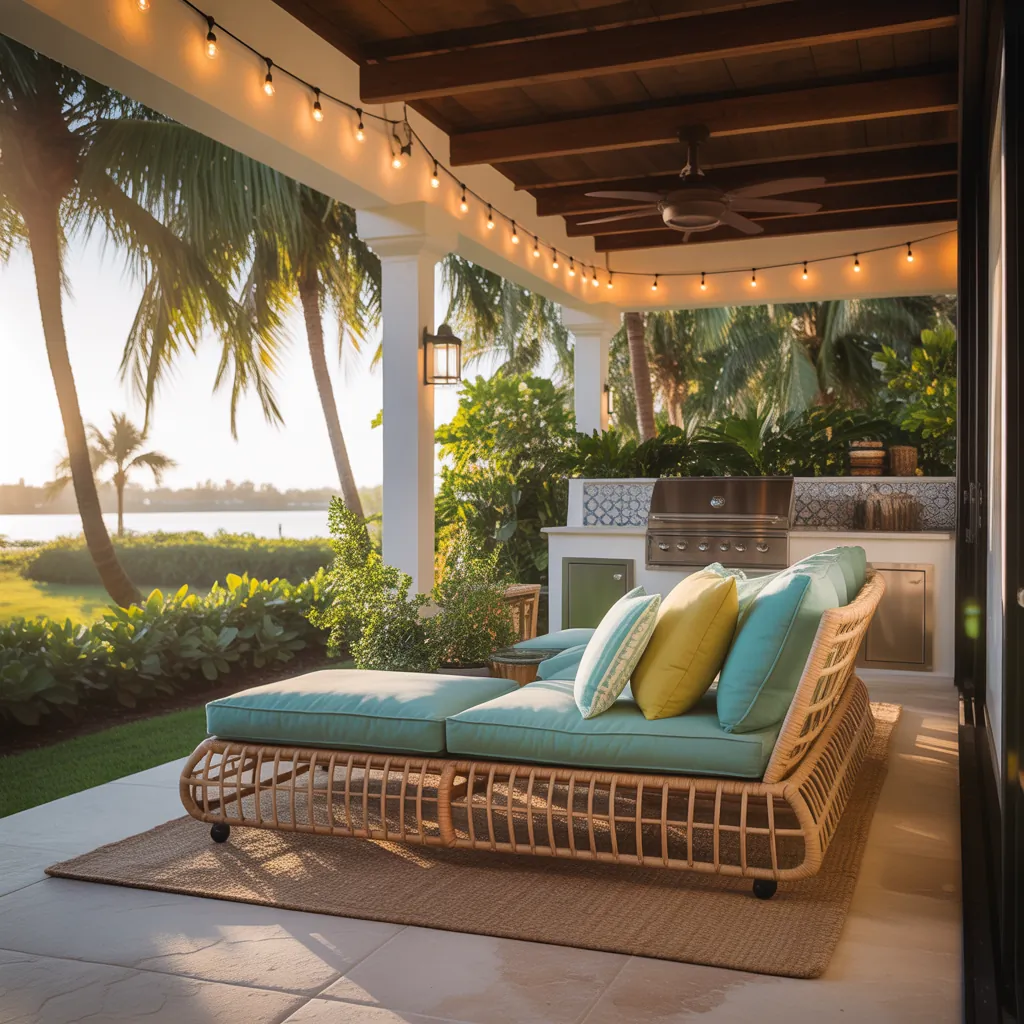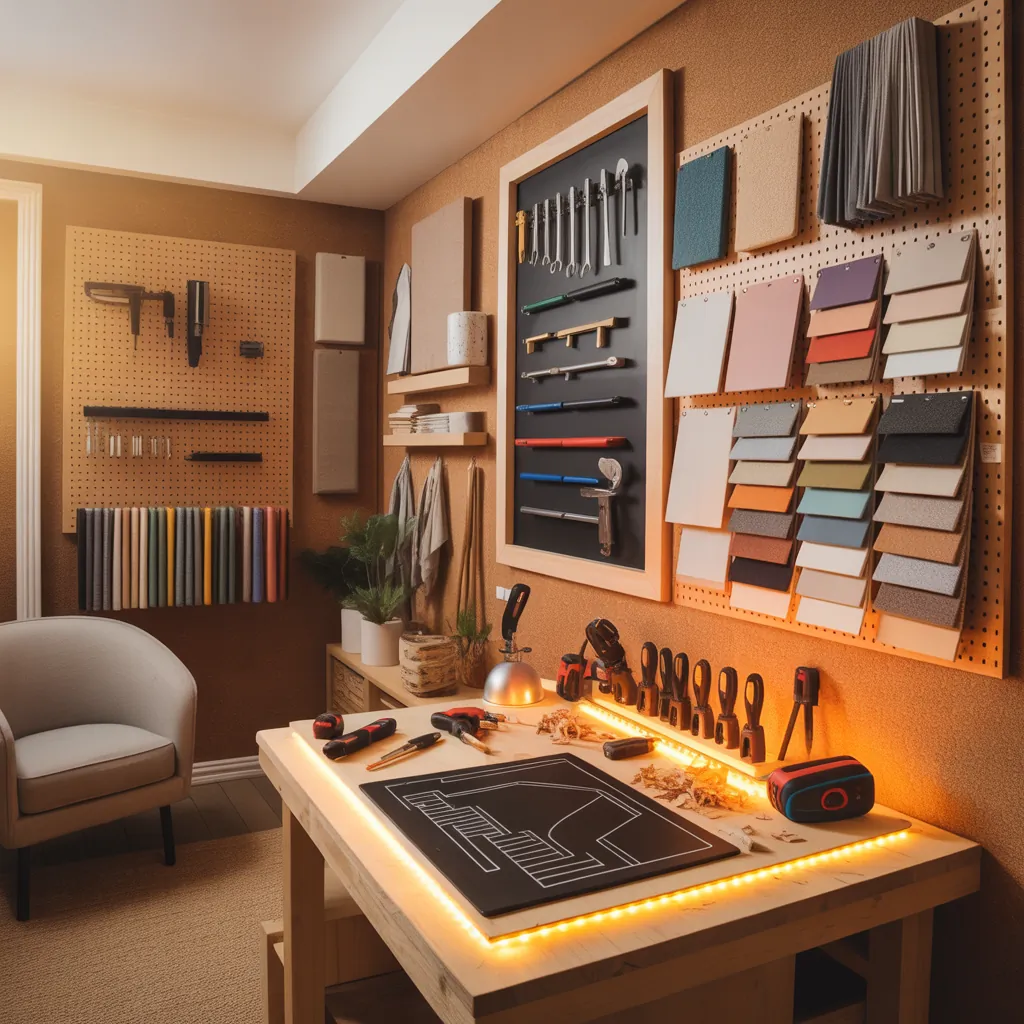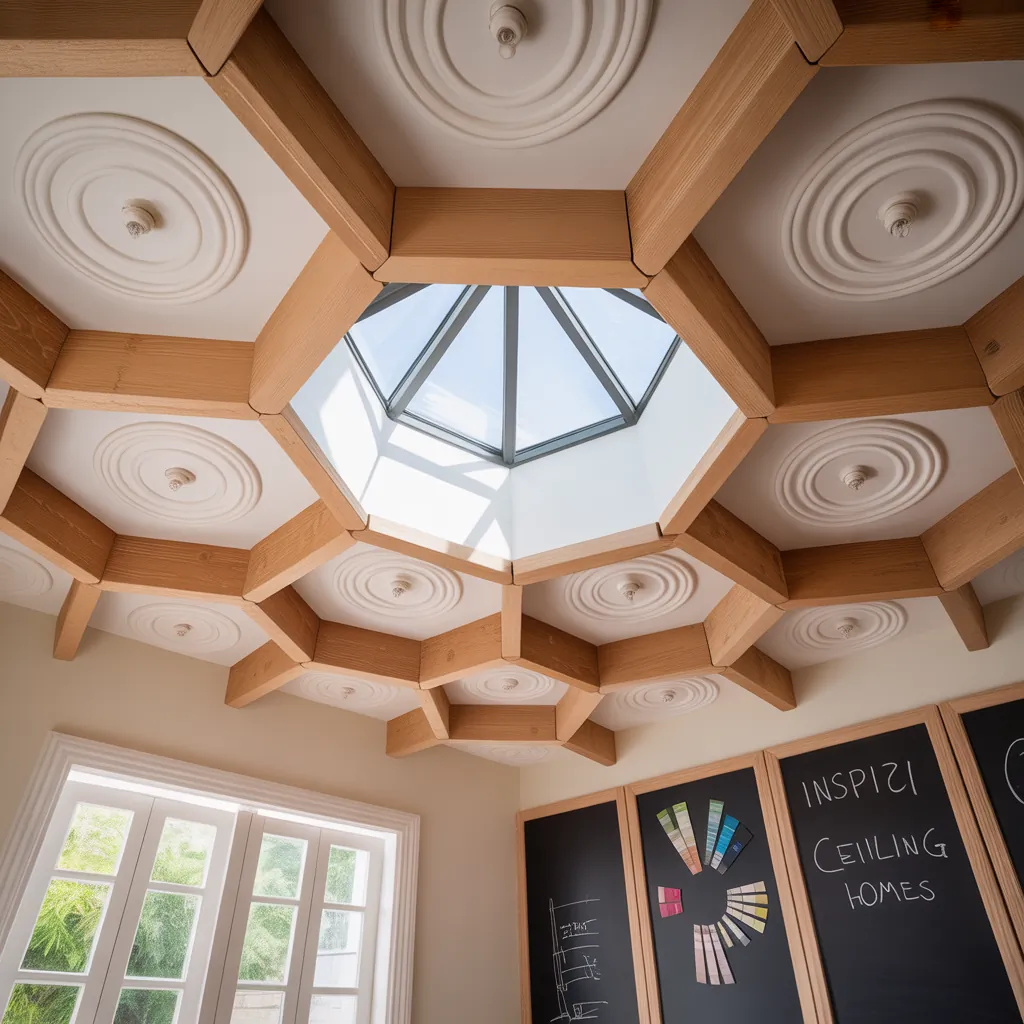Picture this: it’s an early Florida morning, coffee in hand, but your screened lanai feels tired—faded cushions, chawed-up wicker, and a concrete floor that begs for personality. You want an outdoor retreat that handles sun, salt, humidity, and mosquitoes, but where do you start? Whether you’re tackling a weekend DIY or planning a full makeover, these Florida lanai decorating ideas will help you transform that space into a usable, stylish extension of your home.
Why Your Lanai Matters: Florida Lifestyle Meets Smart Design
A lanai is more than a porch—it’s an outdoor living room built for coastal breezes, family gatherings, and year-round use. Effective lanai design balances comfort with durability: think breathable fabrics, rust-resistant hardware, insect control, and materials that won’t fade under tropical sun. The goal is a low-maintenance, high-comfort space that feels intentional.
Popular Styles for Florida Lanais (and How to Pick One)
Choose a design direction first to make decorating choices easier. Here are four styles that work especially well in Florida.
Coastal Breezy
- Color palette: whites, soft blues, sandy neutrals.
- Materials: teak or powder-coated aluminum, marine-grade cushions, striped outdoor rugs.
- Accent idea: rope-wrapped planters and driftwood accessories.
Tropical Retreat
- Color palette: lush greens, coral, banana-leaf prints.
- Materials: synthetic rattan, waterproof fabrics, lots of potted palms and birds of paradise.
- Accent idea: hang planters at different heights for vertical greenery.
Modern Minimal
- Color palette: charcoal, white, natural wood tones.
- Materials: composite decking tiles, sleek metal furniture, geometric lighting.
- Accent idea: a statement outdoor rug and a sculptural planter.
Boho Lanai
- Color palette: earthy tones, warm textures.
- Materials: macramé, layered rugs, mixed-pattern cushions (UV-treated).
- Accent idea: a DIY pallet daybed with colorful throws.
Practical DIY Projects: Step-by-Step Lanai Upgrades
Here are realistic, step-by-step improvements you can complete over a weekend or a few afternoons.
1. Refresh the Ceiling and Add a Fan
- Clean the ceiling and repair any water stains or soft spots.
- Prime and paint with a mildew-resistant, exterior ceiling paint (use a light color to reflect heat).
- Install a damp-rated ceiling fan—opt for a DC motor for energy savings and stainless hardware for coastal resilience.
- Seal any electrical penetrations with silicone to keep moisture out.
2. Upgrade Flooring with Interlocking Deck Tiles
- Clean the concrete thoroughly and level any big cracks.
- Choose porcelain tiles or composite wood interlocking tiles—both are durable and slip-resistant.
- Lay tiles from one corner, snap into place, trim edges as needed with a jigsaw or tile cutter.
- Finish with non-slip adhesive pads under furniture.
3. Build a Privacy Screen or Retractable Shade
- Measure the area needing privacy or sun blockage.
- For DIY wood screens: build a simple frame with pressure-treated lumber, attach slats with stainless screws, and stain with exterior-grade stain.
- For a quick solution: install a retractable outdoor shade that screws into beams—choose UV- and mildew-resistant fabric.
- Anchor securely to withstand wind and remove before storms if not rated for hurricane force.
4. Create a Container Garden Wall
- Choose lightweight containers and a wall-mounting system or sturdy shelving.
- Plant salt-tolerant and heat-loving species: succulents, potted palms, herbs, and bougainvillea.
- Use a quality potting mix mixed with perlite for drainage, and install a drip irrigation timer to reduce maintenance.
Furniture, Fabrics, and Materials That Survive Florida Weather
Select pieces built for humidity and sun. Look for:
- Powder-coated aluminum or stainless-steel frames to resist rust.
- Synthetic wicker or marine-grade teak for furniture that stands up to salt air.
- Sunbrella or other UV-resistant fabrics for cushions and outdoor curtains.
- Porcelain tile or composite decking for flooring—both are low-porosity and fade-resistant.
Lighting, Insect Control, and Climate-Smart Tips
Lighting sets mood and extends usability. Use layered lighting: recessed LED downlights, dimmable string lights, and solar step lights for pathways. For insect control, combine a screened lanai with targeted fixes: a high-quality screen mesh (no-see-um if gnats are a problem), citronella or native plantings, ceiling fans to disrupt flight, and sealed entry points.
Consider a small misting system for cooling during heat waves or shade sails to reduce UV exposure. Always confirm installation methods and materials are rated for outdoor, marine, and hurricane-prone conditions in Florida.
Maintenance and Seasonal Care
- Monthly: Sweep and hose down; check grout and caulk for cracks.
- Quarterly: Wash cushions with mild soap; check metal fittings for corrosion and touch up powder-coat chips.
- Before storm season: Store loose furniture, remove potted plants that can topple, and secure retractable shades.
Florida Lanai Decorating Ideas: Weekend Refresh Checklist
Ready for a one-weekend refresh? Use this checklist:
- Clean and paint the ceiling or add beadboard.
- Lay interlocking deck tiles over concrete.
- Replace cushions with UV-resistant fabrics and add an outdoor rug.
- Install a ceiling fan and a string of weatherproof lights.
- Add two to three large planters with palms or ferns and a small herb box.
- Install retractable shades or DIY a privacy screen.
Small upgrades add major impact—start with lighting and seating, then layer in plants, textiles, and decor.
Frequently Asked Questions
1. What materials are best for a Florida lanai floor?
Porcelain tile, sealed stamped concrete, or composite decking tiles are ideal. They resist moisture, are less slippery when wet, and won’t warp in humidity. For budget options, a quality outdoor rug over sealed concrete works well.
2. How do I keep mosquitoes out of my screened lanai?
Use a tight-weave screen (no-see-um mesh if needed), install ceiling fans to create airflow, seal gaps around doors and screens, and add plant-based repellents or an electric bug zapper positioned away from seating areas.
3. Can I leave outdoor cushions out year-round in Florida?
While many outdoor fabrics are UV- and mildew-resistant, it’s best to store cushions during prolonged wet weather or hurricanes. Use breathable storage bins and give cushions a quick wash every few months to prevent mildew buildup.
Want more project ideas and inspiration? Check out our DIY projects and home design ideas pages for step-by-step guides and room-by-room inspiration.
Conclusion — Start Your Florida Lanai Decorating Project Today
With the right materials and a few focused DIY projects, your Florida lanai can become a durable, stylish retreat that embraces indoor-outdoor living. Whether you pick a coastal, tropical, modern, or boho vibe, these Florida lanai decorating ideas give you practical steps, low-maintenance solutions, and design inspiration to get started. Ready to refresh your lanai this weekend? Grab a paint brush, lay down some tiles, and transform your outdoor room—then share your progress and try more of our DIY projects as you expand your home improvements.



